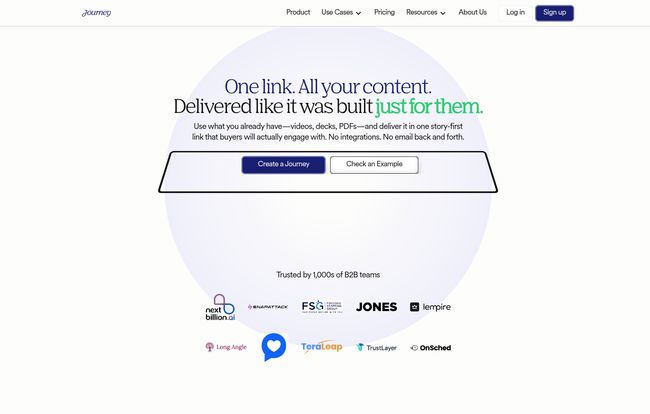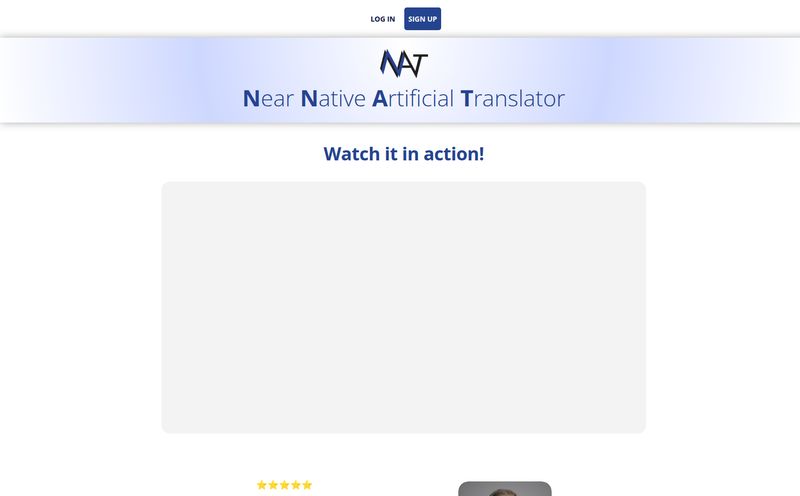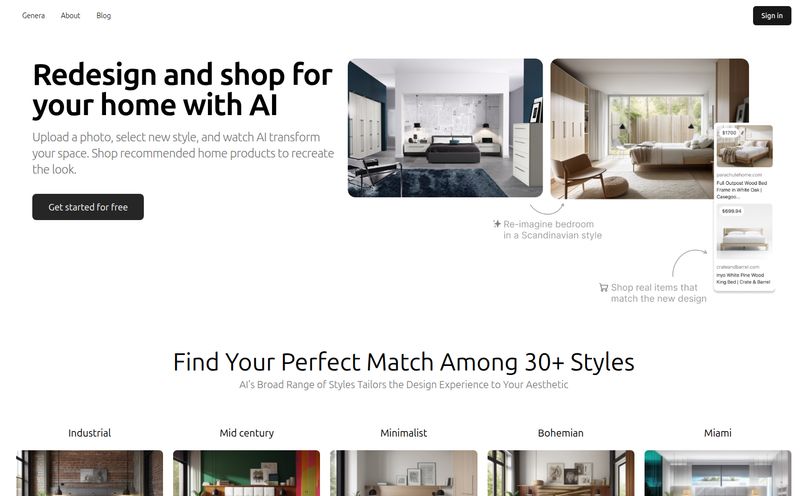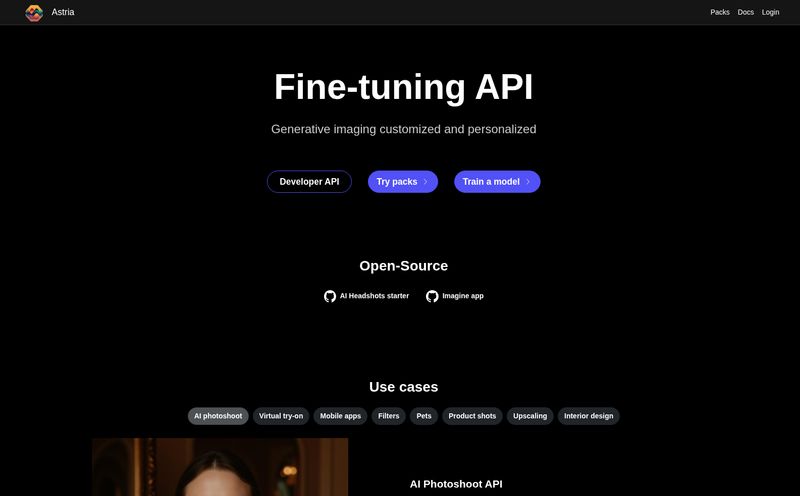If you're in B2B sales or marketing, you know the drill. You have a great call with a prospect. They’re excited. You’re excited. You hang up and promise to send over some info. And then... the chaos begins.
You start drafting that follow-up email, which quickly turns into a digital Frankenstein's monster. You attach a PDF of the proposal, drop in a link to a Loom video demo, paste a URL to a relevant case study on your blog, and maybe even link to a Miro board for good measure. You hit send and cross your fingers, hoping they actually open all five things and can piece the story together. It’s messy. It’s clunky. And honestly, it’s not a great experience for your potential customer.
I’ve been in the traffic and conversion game for years, and I’ve always felt that the biggest drop-off point isn’t the pitch itself, but the messy, friction-filled follow-up. That's why when I stumbled upon a tool called Journey, my curiosity was definitely piqued. It claims to be the solution to this exact problem. But does it live up to the hype? Let’s find out.
So What Is Journey, Exactly?
First off, don't think of Journey as just another slide-builder like PowerPoint or Google Slides. That’s not really what it is. The best way I can describe it is as a tool for creating interactive, branded microsites for your content. Think of it less like a static presentation and more like a curated digital experience or a personal 'digital sales room'.
Their whole pitch is that your content is already good, but how you package it is the problem. Journey lets you pull all those scattered assets—your PDFs, videos, docs, and links—into a single, beautiful, and most importantly, trackable link. It’s like taking all your best ingredients out of their separate, boring containers and arranging them in a slick, professional bento box. Everything the client needs, all in one place, telling one coherent story.
The Real Problems Journey Solves So Well
I think the core value here is solving what I call “content sprawl.” We create all this amazing stuff, but it lives all over the place. Our prospects are busy. They don't have time to go on a digital scavenger hunt just to understand our value proposition. They want a clear path from A to B.
Journey creates that path. Instead of an email with seven links, you send one. One link that opens up a polished, brand-aligned flow that guides them through the narrative you want to tell. This is huge not just for sales deals, but for investor updates, client onboarding, fundraising pitches... basically any scenario where you need to present information cleanly and professionally.
My Favorite Features (And a Few Quirks)
I spent some time poking around the platform, and a few things really stood out to me as being more than just marketing fluff.
Automagic™ AI: Your Content Co-Pilot
Okay, the term “Automagic” is a bit cheesy, I'll admit it. But the AI functionality is genuinely useful. The idea is you can give it a topic or your business URL, and it generates a draft of your presentation. Now, let’s be clear: this isn’t going to write a perfect, closing-worthy pitch right out of the box. I've seen some agencies promise the world with AI and deliver very little. However, what it is great for is beating the blank page. It creates a solid structure and some decent starter copy that you can then edit and refine. It saves time, and for that alone, it's a win in my book.
Interactive Blocks for Real Engagement
This is where it gets interesting. A standard PDF or slide deck is a monologue; you're just talking at your audience. Journey lets you embed interactive elements directly into your flow. You can add forms to capture information, embed videos that play right there, and according to their site, a chatbot feature is on teh way. This changes the entire dynamic. It turns a passive viewing experience into an active dialogue. You're not just presenting; you're engaging.

Visit Journey
Trackable Links Are a Game Changer
For anyone obsessed with data and analytics (hi, it's me), this is the killer feature. When you send a standard email, you might know if they opened it. That’s it. With Journey, you send your branded link and get detailed insights. You can see who viewed your Journey, which slides they spent the most time on, and what content they engaged with. This is gold! Imagine knowing your prospect spent 10 minutes on the pricing page but skipped the case study. That information allows for an incredibly targeted and intelligent follow-up. No more flying blind.
Branded Microsites for a Pro Look
First impressions matter. Sending a link to a clean, professionally designed microsite with your logo, your colors, and even your own custom domain (on the Grow and Scale plans) just screams professionalism. It shows you’ve invested in the client experience. It’s a subtle but powerful way to build trust and stand out from the competition who are still just attaching PDFs.
How Is Journey Different from Notion or Loom?
This is a fair question, and one Journey even addresses in their own FAQ. It’s easy to get these tools confused. Here’s my take: they all do different jobs.
- Loom is for creating and sharing a single asset: a video message. It’s a fantastic tool, but it's just one piece of the puzzle.
- Notion is an incredible internal workspace and knowledge base. You can build client-facing pages, but it’s not purpose-built for the guided, narrative, and analytical experience of a sales pitch.
- Journey is the package for all these things. You might create a video in Loom and write up details in a Google Doc, but you use Journey to present them together in a controlled, trackable, and persuasive flow. It's the presentation layer, not the creation tool itself.
Let's Talk About Journey's Pricing
Alright, the all-important question: what does it cost? Journey has a pretty flexible pricing structure with four main tiers, which I appreciate. It’s not a one-size-fits-all approach.
| Plan | Price | Best For | Key Features |
|---|---|---|---|
| Free | $0 / user / month | Individuals or trying it out | Unlimited Journeys, Basic Insights, Google Drive Integration. Has "Made in Journey" branding. No AI features. |
| Start | $25 / user / month | Small teams & freelancers | Removes branding, Adds AI features, Customized Meta Titles, Access Control. Capped at 15 Journeys. |
| Grow | $59 / user / month | Scaling businesses | Unlimited Journeys, Advanced Insights, Custom Domain, Session Replays, Slack Notifications. |
| Scale | $75 / user / month | Larger teams & enterprises | Everything in Grow, plus HubSpot Integration, Custom Domain for Workspaces, User Roles (coming soon). |
The Free plan is actually quite generous for just getting a feel for the platform. But here's the deal, the real magic—the AI features and branding removal—starts with the Start plan. For serious businesses, the Grow plan seems like the sweet spot, with the custom domain and advanced insights being major selling points.
A Few Things to Keep in Mind
No tool is perfect, and it's worth being honest about potential drawbacks. While I'm pretty optimistic about Journey, the pricing could be a concern for smaller startups or solopreneurs, especially when you need multiple seats. At $59 or $75 per user per month, it can add up quickly.
Also, as with any AI tool, you can't just set it and forget it. The AI is a fantastic assistant, but it still requires a human touch to ensure the content is accurate, on-brand, and genuinely persuasive. And finally, some of the most exciting features, like the chatbot and SSO, are still listed as “coming soon.” That's not a deal-breaker, but it’s something to be aware of.
The Final Verdict: Is Journey Worth It?
In my opinion, yes. For the right team, Journey is absolutely worth it.
If you're a B2B sales or marketing team still stuck in the cycle of emailing a mishmash of links and attachments, Journey could fundamentally change your workflow for the better. It brings a level of professionalism, coherence, and data-driven intelligence to the sales process that is tough to achieve otherwise. It’s an investment, for sure, but one that could easily pay for itself in saved time and more effective, faster-closing deals.
It's a smart tool for a modern sales motion. It understands that closing a deal is about telling a great story, and it gives you a beautiful stage on which to tell it.
Frequently Asked Questions
- What is Journey best used for?
- It’s designed for B2B use cases where you need to present scattered information in a cohesive narrative. This includes sales follow-ups, proposals, client onboarding, investor updates, and fundraising pitches.
- Can I use Journey for free?
- Yes, Journey offers a free plan that includes unlimited journeys and basic insights. However, it includes “Made in Journey” branding and does not include the AI content generation features.
- How is Journey's AI different from something like ChatGPT?
- While both use AI, Journey's is purpose-built for creating presentation-style content. It's trained to generate outlines, slides, and copy specifically for a business narrative, rather than being a general-purpose conversational AI.
- Does my client need to create an account to view a Journey?
- No, and this is a huge plus. You send a simple link, and your prospect or client can view it directly in their browser without any need to sign up or log in, creating a frictionless experience.
- What integrations does Journey offer?
- Currently, it offers Google Drive integration on all plans, Slack notifications on the Grow and Scale plans, and HubSpot integration on the top-tier Scale plan.
- Is Journey mobile-friendly?
- Yes, Journeys are designed to be fully responsive, so they look great whether your prospect is viewing them on a desktop, tablet, or their phone.



